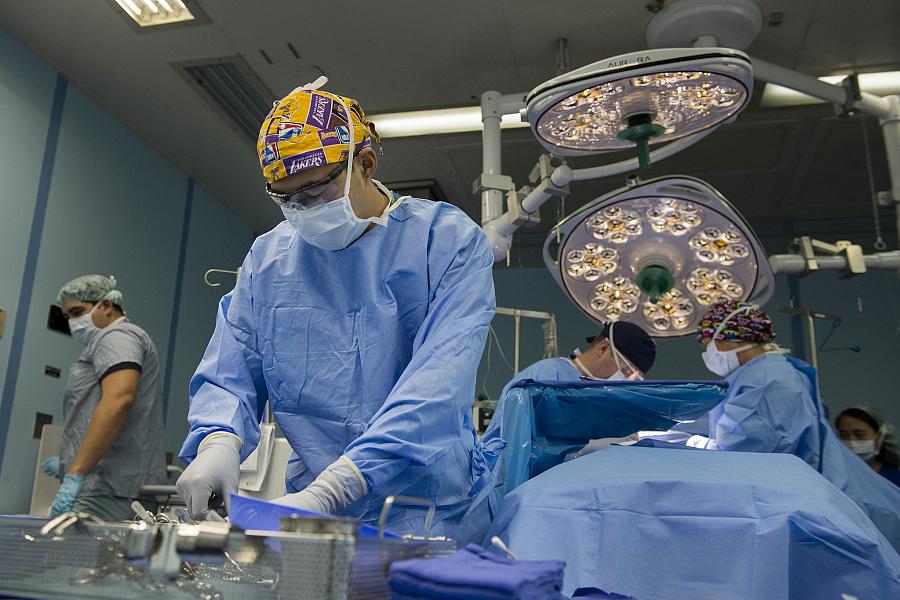How do you decide which patient harm tips to pursue?
Like many reporters who cover health, I receive a steady stream of tips related to patient safety. People reach out when they believe their doctor made a mistake, or when they or their loved ones were hurt by a medical provider. They want the newspaper to investigate.
The tips can lead to important stories that have real impact. (Medical mistakes happen more often than you might think.) But they can also be dead ends. What’s more, figuring out if a patient suffered a preventable injury can be challenging and takes time and resources.
What’s the best way to vet the tips and decide which to pursue? There are steps I take and records I seek out. For additional input, I posed the question to Marshall Allen, who unearthed widespread patient harm in Las Vegas hospitals (and a stunning lack of oversight) and has since covered patient safety extensively for ProPublica.
Although Allen’s most recent work has focused on abuses in the health insurance industry, he still hears from people on the subject of safety. “Almost every day, I get a voicemail or an email from someone who has been injured or harmed,” he said. “The problem is overwhelming.”
Allen recommends doing some legwork before getting started. A key step, he said, is developing a network of local medical experts who can help. As reporters, we may develop expertise in health care, but we usually aren’t doctors or researchers ourselves. Getting to the bottom of complex medical cases takes help from experts in a specific specialty or subspecialty.
To build a list of expert contacts, reporters can create a simple Google Form that asks: “Will you help me with my health care reporting?” Use it to collect experts’ names, phone numbers and areas of expertise. To get the form out there, Allen said, include the link at the bottom of every story you write.
“You are building this team of experts who are like-minded with you,” he said. “They’ve tried to fix things internally and they’ve come up against political roadblocks and conflicts of interest. They see the value of helping a journalist.”
I also recommend familiarizing yourself with “never events,” or adverse incidents that are serious and usually preventable. Some never events, like wrong-site surgeries and cases in which surgical instruments are left inside patients’ bodies, are easy to identify and automatically merit coverage. A 1995 case in which a Tampa surgeon mistakenly amputated the wrong leg, for example, made national headlines.
Once you’ve done the reading and have the experts, the real work begins. When a tip comes in alleging patient harm, I ask the tipster for copies of the patient’s medical records. I also ask to review any complaints or lawsuits that have been filed about the incident. A compelling lawsuit or an investigation by regulators can be newsworthy on its own.
Allen also asks patients to waive their right to privacy guaranteed under the Health Insurance Portability and Accountability Act. “I don’t want any doctor or hospital hiding behind the federal patient privacy laws,” he said. “Because frankly, they are not allowed to talk to me unless the patient waives those rights.” He asks hospital officials if they have a specific HIPAA release form or if an email from the patient will do. ProPublica published this example of a waiver in its guide for journalists on the subject.
If the records corroborate what the tipster is telling you and something seems awry, enlist the help of your experts. Medical cases are nuanced. A bad or unexpected outcome doesn’t mean the provider or the facility made a mistake. Experts can review the patients’ records and help you understand them. They can also explain how a certain procedure ought to go and how often complications are expected.
Then, look for patterns. Have other patients alleged the same kind of harm by that provider or facility? One place to check is court records. Read through all of the lawsuits that have been filed against the provider and the facility. You can also search state records to see if the provider has had any discipline against his or her medical license or settled any large malpractice lawsuits. Pull paper on the facility, too. The federal inspection reports published by the Association of Health Care Journalists are a great place to start. Your state health care regulator will also have any state inspections or complaints.
Throughout the process, be upfront and transparent with the people who are sharing their stories. Allen said he lets potential subjects know that he will ask invasive questions and interview them repeatedly over an extended period of time. He also lets them know that he’s not an advocate. “I explain to them that I’m going to independently investigate this because I care about people and I care about you, but it doesn’t mean I’m on your side,” he said.
Be upfront with the providers and facilities, too. Make sure they have ample time to share their perspective on what happened.
If this sounds hard, it is. But Allen and I agree that the work is critically important. “We are the only accountability or information source for these types of problems,” he said. “And it’s a huge problem.”


